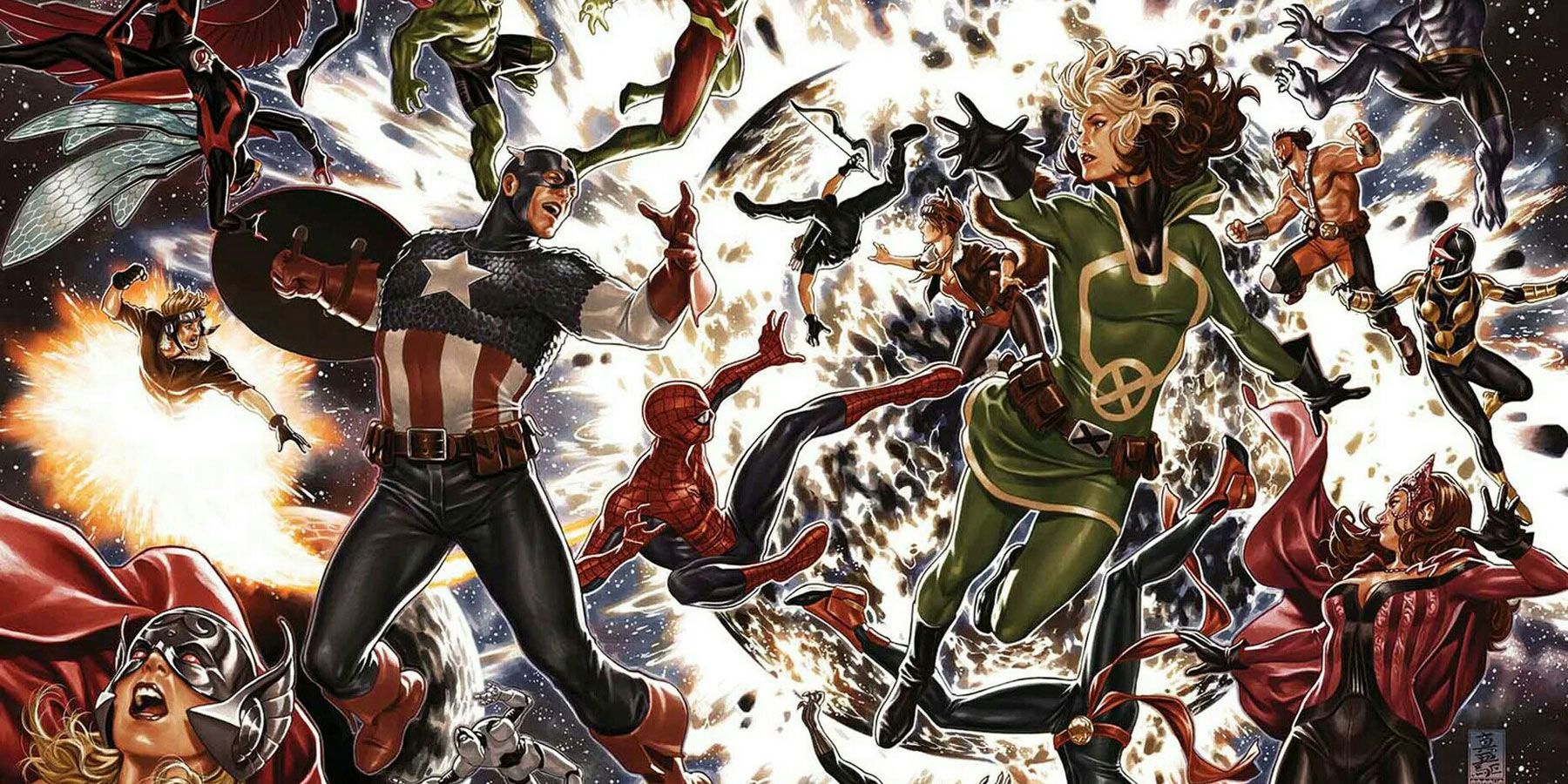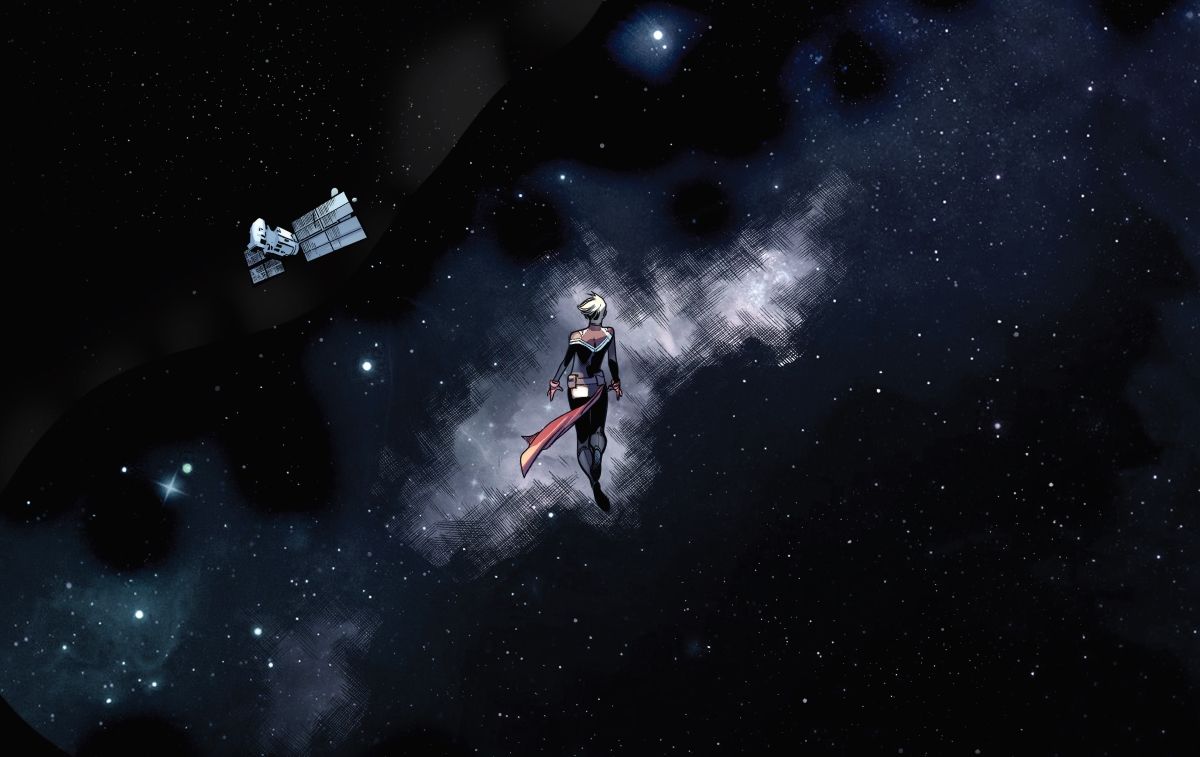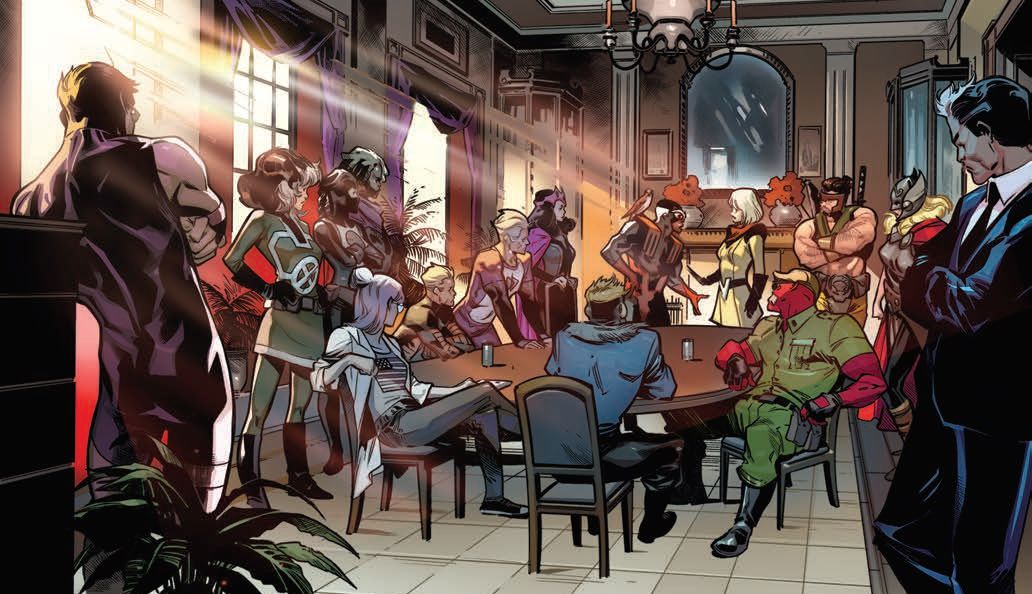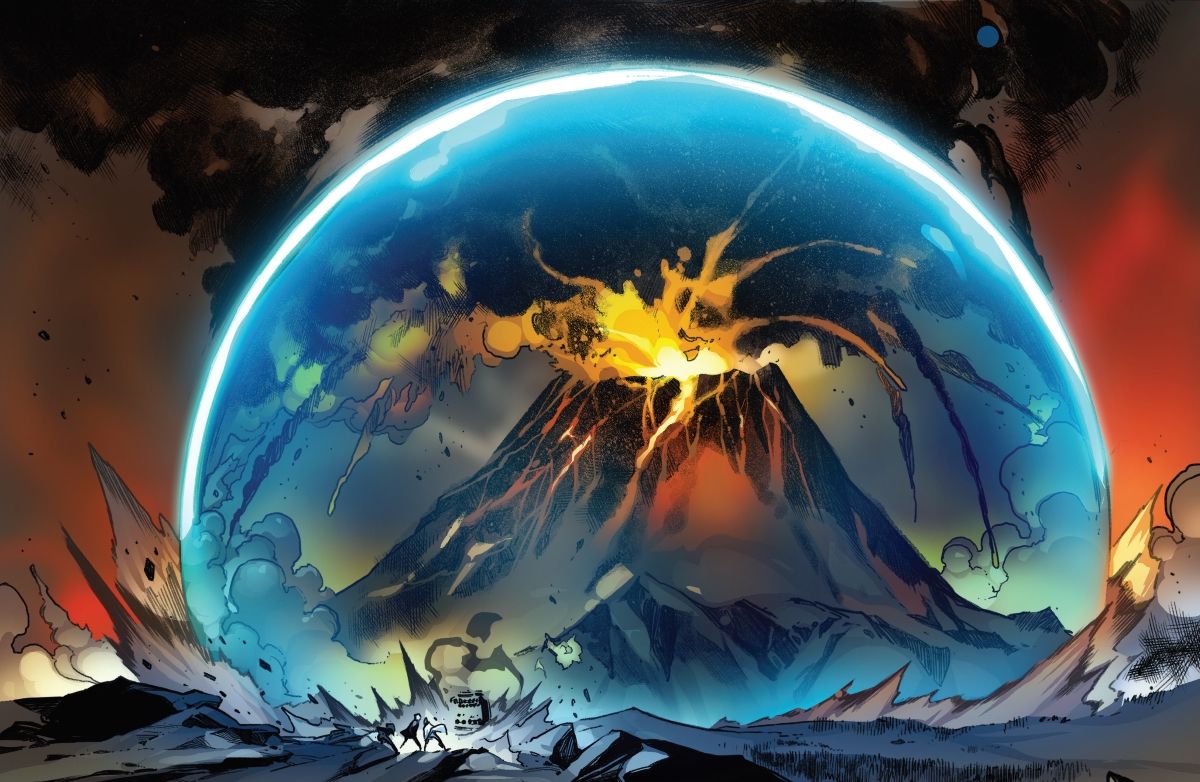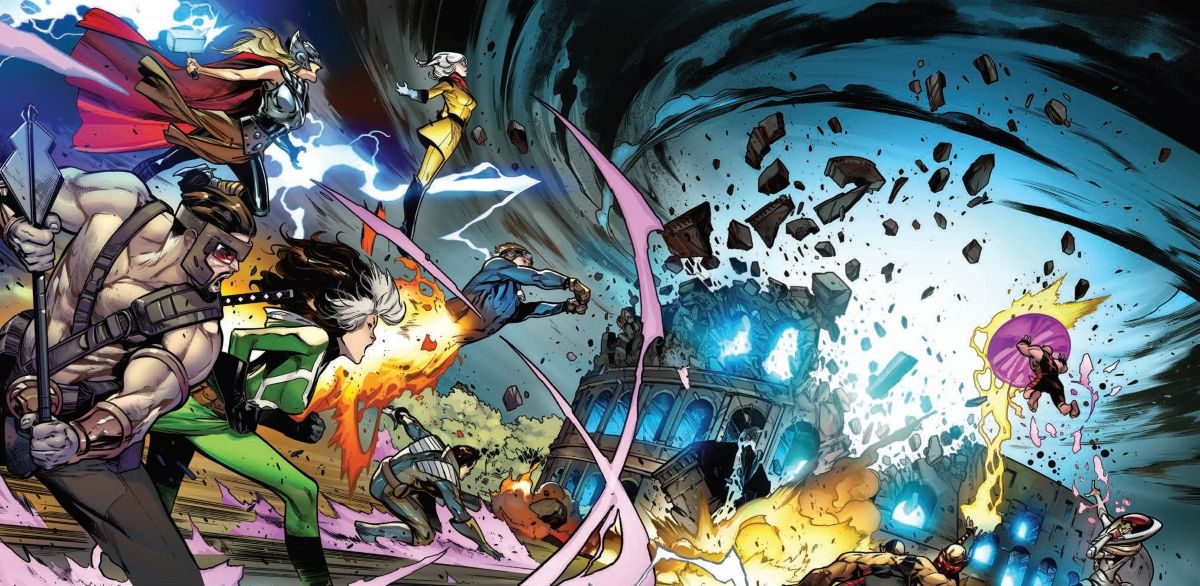Avengers: Infinity War might be dominating the cultural landscape like a Mad Titan right now, but it’s not the only big Avengers release this week. Avengers #690 is the last issue of the Marvel comic book series before it relaunches with a new #1 -- and, more importantly, it wraps up the 16-part “No Surrender” storyline that’s been running since the start of this year, from the writing trio of Al Ewing, Jim Zub and Mark Waid, and with artists including Joe Bennett, Kim Jacinto, Paco Medina, Pepe Larraz, Sean Izaakse and Stefano Caselli.
It’s a great end to one of the most enjoyable event comics of recent years. So, as we all reel after the major developments from the latest big-screen adventure of Tony, Steve, Nat, Thor et al, here’s what makes "Avengers: No Surrender" the perfect comic book blockbuster.
RELATED: INTERVIEW: Jason Aaron Breaks Down Marvel’s New Avengers Lineup
Facing the biggest possible threat
“No Surrender” opens like a disaster movie. Like all of them at once, in fact, as earthquakes, floods, volcanoes and hurricanes suddenly sweep across the globe. Plus, this being a superhero comic crisis, the sky turns blood red.
It’s not initially clear why any of this is happening, but it’s clearly a pretty big deal. Especially as half of the world’s superheroes inexplicably freeze in place. And doubly so when the remaining heroes realize that the Earth has been moved. Yup, the entire planet -- plus the moon -- are teleported straight out of the solar system by an unknown force.
All of this makes for a genuinely global catastrophe. The book remains anchored in New York City -- this is still the Marvel Universe, after all -- but over the course of the series we visit everywhere from Iceland to Peru, Egypt to the Antarctic.
An emphasis on teamwork
It isn’t long before more traditional supervillains appear, in the form of the Black Order and a newly assembled Lethal Legion, but dealing with natural disaster movies shows us a different side of these heroes. It’s a refreshing change of pace to see Human Torch and Scarlet Witch combining their powers to hold back a tidal wave -- and, more than that, it taps into a couple of things which make the series’ approach to superheroics work.
The first is making the most of the fact that the Avengers are a team. Multiple teams, in fact. All three preexisting Avengers books -- adjectiveless, Uncanny and U.S.Avengers -- were consolidated into this single title, and “No Surrender” brings together members from each cast. You could even say… they assemble.
“No Surrender” identifies this team catchphrase as a genuinely magic word, and repeatedly uses it so show what makes the Avengers special. Namely, that the team’s boundaries are so wide, stretching from a literal god to a guy who shoots arrows. From household names like Hulk and Spider-Man to C-listers like Wonder Man and the superhero formerly known as Living Lightning. From a newbie like the Unstoppable Wasp Nadia Pym, to a founding member like… well, the original Wasp, Janet Van Dyne.
But when summoned, with the "A"-word, these disparate heroes all come together for the common good of humanity. Speaking of which…
Superheroes who actually save people
The characters of “No Surrender” don’t save the world just by finding the biggest possible bad and punching them. The team’s primary purpose isn’t fighting, as perfectly summed up by Falcon. “Avenger rule number one: Save lives. Even the poisonous ones.”
Don’t worry, there’s still plenty of punching. Almost every issue comes with at least one double-page spread filled with heroes and villains clashing, often in interesting and inventive ways that reward a closer look. It’s just not the only way that problems are solved.
As a pacifist, Wonder Man tries to reason with everyone from an enraged Hulk to the Lethal Legion. In an attempt to cure Jarvis of a mysterious ailment, Beast and Wasp fantastic voyage their way inside his brain. Even #689’s climactic battle cuts back and forth with a hand of Texas Hold ‘Em, just as pivotal to the fate of the world as the big punch-up.
“No Surrender” also tasks its heroes -- and readers alike -- with solving mysteries. What is the strange pyramid-shaped meteor that crashed into Rome’s Colosseum? Who is Voyager, the alleged founding Avenger we’ve never seen before? Why have half the world’s heroes frozen in place?
And, of course, where the heck did Earth actually go, and who put it there?
These mysteries pull you from issue to issue. Reading “No Surrender” as it came out, on a weekly basis, the pace was perfect -- providing answers while the questions are still fresh in your head, while constantly adding a new mystery to the pile.
Page 2: [valnet-url-page page=2 paginated=0 text='How No Surrender helps set up the future of the Marvel Universe']
Finding time for individual characters
The premise of “No Surrender” means that, in theory, it has every single current Avenger at its disposal. Given the aforementioned broad membership policy, that’s basically every superhero on the planet.
That might sound great in theory -- a story with all of your favorite characters in the mix -- but too large a cast often means no one gets the space they deserve. This was the downfall of Avengers: Age of Ultron, to pick a cinematic example, and it was a concern about the even-larger Infinity War.
“No Surrender” shrinks down the team a bit, by literally pressing pause on the likes of Spider-Man, Captain America, basically the entire X-Men, Black Panther and even the Unbeatable Squirrel Girl. But that still leaves it with a bigger cast than just about any Avengers story you’ve ever seen, on the page or screen. The character recap page which kicks off every issue often features a dozen villains, and twice as many Avengers.
The real solution to this problem comes from “No Surrender” embracing its serialized nature. Each issue gives the starring role -- and narrative captions -- to a different character, including heroes, villains, and everything in between. It’s a great way of including a multiplicity of voices, and the writing team do a great job of making each one stand out.
A frustrated Quicksilver, desperate to prove himself after a recent mistake put another Avenger in danger. Voyager, laying out her real origins and slowly coming to understand what being an Avenger means. Wonder Man, arguing superheroes can “do better than solving every problem with their fists”.
This helps the book feel like a true ensemble piece, rather than three main characters talking while a load of familiar faces stand around in the background, and makes it possible to weave smaller character arcs in among all the big world-in-the-balance developments.
A perfect example is Miguel Santos, now going by "Lightning" (he dropped the "Living," presumably after Justin Timberlake told him it was cleaner). He narrates the first and penultimate issues, and in the process we see him develop from feeling insecure about his C-list status to embracing it in order to save the day. It’s a great revival of a character many readers might not have heard of -- and one that makes that part of his story.
RELATED: Avengers: No Surrender Writers Talk Hulk’s Return & Voyager’s True Identity
Laying down tracks
Part of the excitement around Infinity War is seeing where it leaves the Marvel Cinematic Universe, and there’s no shortage of that in “No Surrender”. Don’t expect a major shift in the status quo -- about the biggest development is that Avengers Manor blows up, which as the characters themselves point out, now happens on a nearly weekly basis -- but it leaves many of its characters in an interesting place.
#690 is essentially an issue-length post-credits sequence, picking up with our heroes after the climactic battle. There’s no shawarma consumed, but it’s a great moment of quiet after the storm -- one of those great standbys of superhero comics -- that also sets up where characters are headed next. Like, all of them. Even the villains.
In some cases, it’s just a line or two, but other characters get a whole new direction. Whether there are concrete plans to pick up on the new status of Roberto da Costa or the Black Order isn’t clear, but it manages to set up at least two forthcoming books -- The Immortal Hulk and Quicksilver: No Surrender.
It feels remarkably organic, perhaps because “No Surrender” manages to be simultaneously a story about each of these individual characters, and one about the entire Earth of the Marvel Universe. One that made coming back week after week thrilling and borderline addictive.
So when the final epilogue -- which really is a post-credits sting in comics form -- wraps up with the words “Always… to be continued," it’s hard not to be excited for whatever comes next.

